

Unclaimed: Are are working at Hygraph ?
Hygraph Reviews & Product Details
Hygraph is a highly intuitive and user-friendly data visualization tool that helps businesses of all sizes visualize and analyze their data in real time. Unlike other tools, Hygraph features a drag-and-drop interface that eliminates the need for coding, making it accessible to users of all skill levels. With its advanced analytics, customizable dashboards, and interactive graphs and charts, Hygraph is a powerful tool that can help businesses make data-driven decisions and gain critical insight into their business performance.

| Capabilities |
|
|---|---|
| Segment |
|
| Deployment | Cloud / SaaS / Web-Based |
| Support | 24/7 (Live rep), Chat, Email/Help Desk, FAQs/Forum, Knowledge Base, Phone Support |
| Training | Documentation |
| Languages | English |

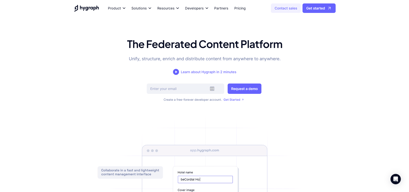
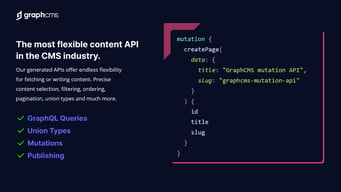
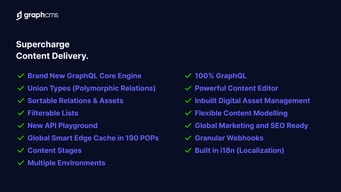
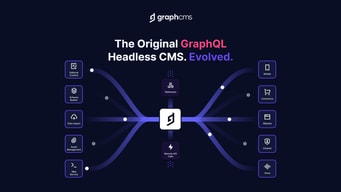
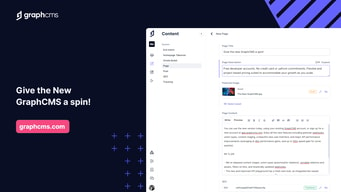
Compare Hygraph with other popular tools in the same category.

Hygraph is the most reliable CMS I've used. I've experimented with quite a few different options, but nothing came to the level of reliability & usability as Hygraph. Implementing it into our codebase is simple, the UI is no-frills & easy-to-manage, and most importantly, it has been reliable. Our team has increased the volume of content we're adding to the CMS and feel confident in housing it in Hygraph. We're excited to continue using it and see what else they come up with to improve the experience.
Some of the new kids on the block integrate easier with folks building website on top of the latest framworks (like Next.js). I'm sure this is something the Hygraph team is working on — I'd love to see easier integration of new schemas in a Next.js app.
- Non-technical stakeholder adding content to marketing site - Hosting content
Really enjoy the speed of api-responses on different geo's.
Can't think of anything. Even the team migration to new dashboard was easy.
Implemented on centralised content db and deliver across all platforms.
This is my goto CMS for any project I create. It's very intuitive, the free plan limitations are just enough for small projects. Helpful API playground makes any integration simple and fast. Customer support is very helpful and responsive, even outside the working hours. They were kind enough to grant me an access to the premium feature for a university project!
The localization of assets might be easier
As any content management system, Hygraph helps me separate the struggle of filling the client's content for their webpage by simply allowing them access to the project and do it themselves. Besides that, it has an excelent set of free features, perfect for creating all startup projects.
Both the Content and Management APIs are incredibly versatile and powerful. I was impressed that we could automate management tasks such as creating webhooks through an API.
Some features need a bit more love. Localisation is a bit janky, with weird treatment of the default language and not-so-intuitive mutations for updating data in localised fields. Overall it is manageable but could be better.
Having an automatically generated graphql API. Improved CMS experience for our content team. Automation via webhooks. A "source of truth" for our content metadata.
Very responsive to feedback when there's a bug or for feature requests. They don't implement everything we've asked them to, but they listen and make improvements to their product when the feature makes sense. Their webhook implementation is good, we use it to notify backend systems about content being updated, but we can opt out of receiving notifications when our automated systems performs the update. The user interface is intuitive enough that normal people can use it. The custom app integration is pretty nice. It allows us to do our own content quality checks and give instant feedback to the editor.
When you have a lot of data, the user interface can become slow. You'll have to manually update a default view of each model to reduce the amount of data you fetch when you're just trying to get the overview. If you have a lot of languages (10+) then the user interface can become a bit messy, but it's a lot nicer than many solutions out there.
Hygraph takes the burden of managing our content pieces, many of them very complex, without us having to update a single field. It enables us to move quickly in content creation, and update our content modeling without having to write many lines of code. We also don't have to worry about handling the database for the content (our data is easily in the hundreds of gigabytes, if not a few terabytes)
It's free to get started, and priced competitively to the market. Data schemas are easy to develop, and GraphQL is easy to work with. The static asset service is great - super easy to resize, crop, and change image formats for optimum cross-platform delivery.
Web interfaces are somewhat limited, although I know they are working to make improvements here.
It is our content management platform and allows us to have a single source of truth for all of our content and static asset needs.
GraphQL API. After migrating our blog from hubspot which uses rest api I realised how lucky I was to use Hygraph. I'm a content creator so I knew Hygraph before as Graphcms and created some blog generation content with it. So I was the one suggested it to my team :) Thank you for creating it! Its super fast easy learning curve and people value your ideas. Thank you
Changing the schema validations after you create 1000+ content on the schema is harsh. I added slug later on after adding 1000+ entries and wasnt able to autofill the slugs from blog titles
we are using it as cms for our lovely blog
Many content management systems focus on features and technology. GraphCMS focuses on the benefits and how we can help you get better results for your business or your customers. This focus on use to the user is what makes GraphCMS unique.
A project is an excellent way to get a website up and running quickly, without a lot of extra work, but the customization is limited.
I am a Freelance content writer; I help startups and SMBs solve their data management problems using graph databases. I build custom-made software solutions that are simple to implement.
User experience, powerful queries with content api
Content sync between environments (prod-staging) would be a useful feature
We needed a content storage app that we dont have to maintain. Hygraph does this job very well.
It is super easy to use, good documentations and I love the usage of graphQL. Having multiple branches also helped us a lot in our development. Its schema also provides everything we need.
I don't think there is anything we dislike about it. Maybe having an extra branch would have helped so we could have production, staging and dev. Other than that I think it is all right.
Considering that we have our own designs so we had to choose a Headless CMS so we tried different ones and we picked HyGraph. In addition, it had a good support team.





